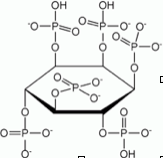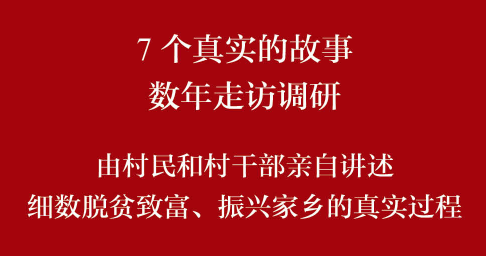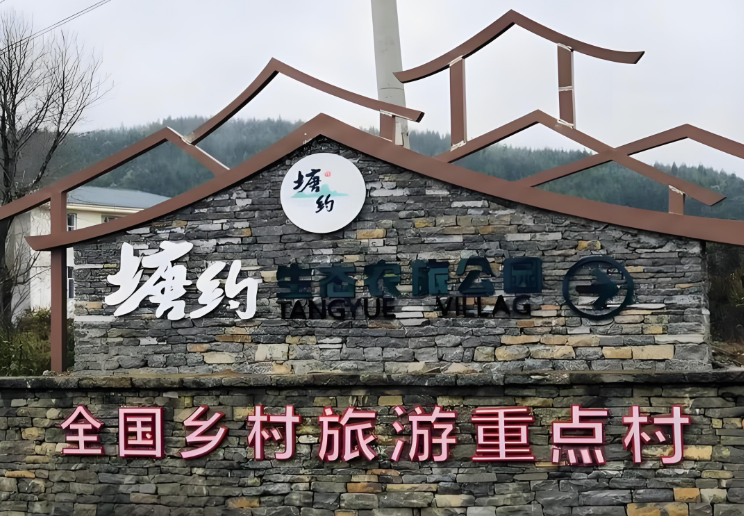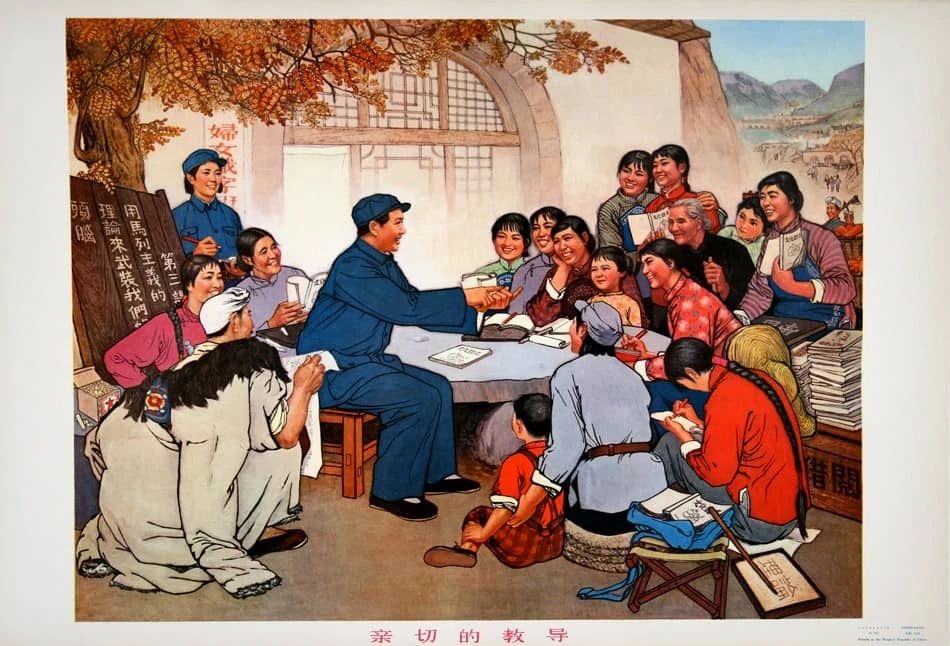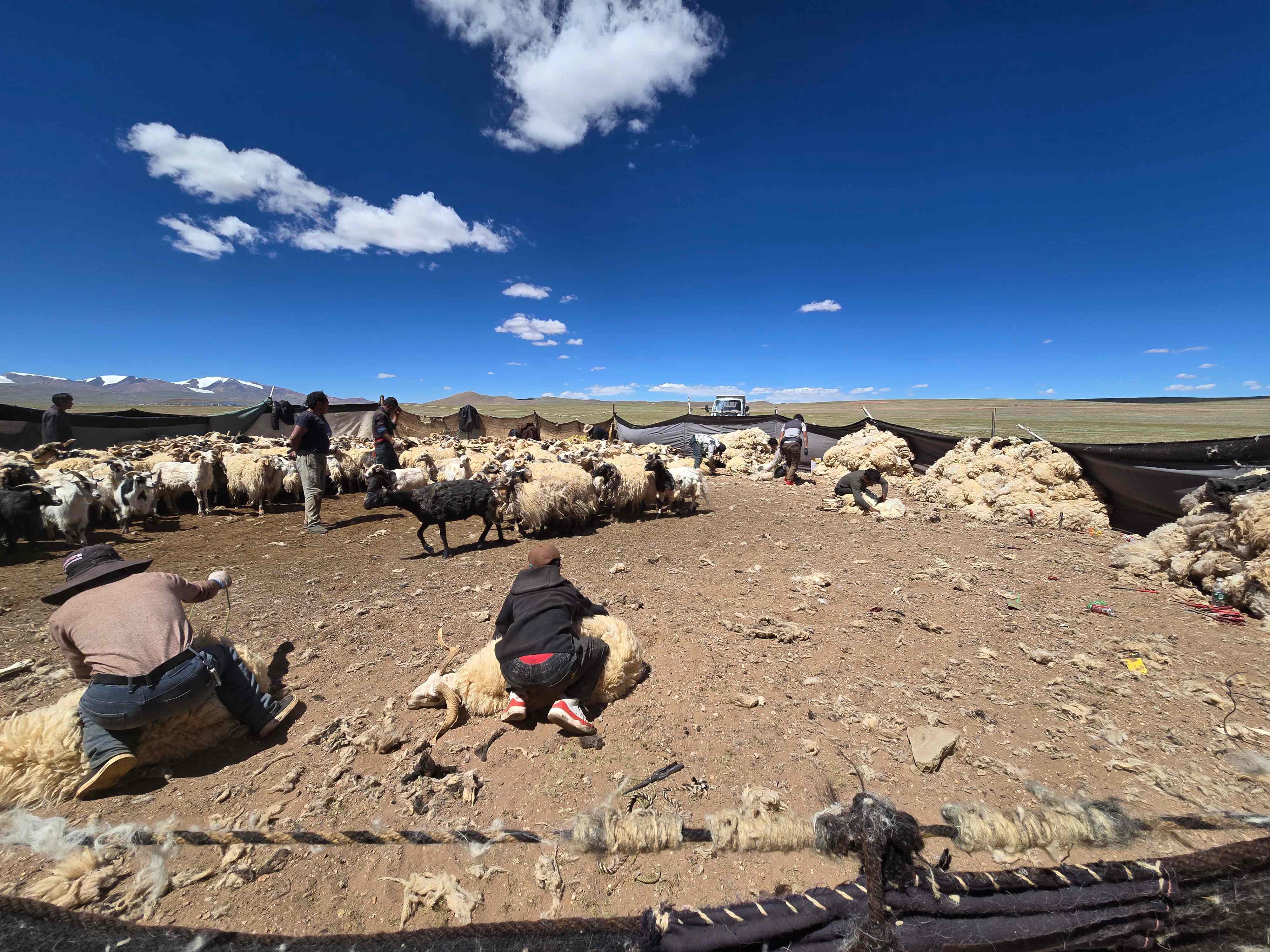中国的转基因植酸酶玉米既无必要又不安全
来源: 原创译文 发布时间:2015-06-20 阅读:3140 次
食物主权按:中国第一种具有极大强化水平植酸酶的转基因玉米,由位于北京的中国农业科学院生物技术研究所范云六院士及其团队于2008年研制[1]。2009年,它获得了农业部颁发的“生物安全证书”,有效期5年,2014年8月到期时未能更新[2];似乎对外界来讲,考虑到广大消费者强烈反对,中国已经放弃了转基因稻米与转基因玉米。然而,2015年初,总部设在北京生命科学园的北京奥瑞金种业股份有限公司宣布其转基因植酸酶玉米的“生物安全证书”获得了更新[3]。中国的“使磷可获得”高植酸酶转基因玉米,在没有必要分子特征与支持性安全数据情况下,再次获得了“生物安全证书”;这是一个为克服磷稀缺的差劣战略,而且对健康与环境造成潜在的严重损害。
China’s transgenic maize with high phytase to make phosphate available has had its bio-safety certificate renewed without requisite molecular characterization and supporting safety data; it is a poor strategy for overcoming phosphorus scarcity, and has the potential to cause serious harm to health and the environment.
中国的“使磷可获得”高植酸酶转基因玉米,在没有必要分子特征与支持性安全数据情况下,再次获得了“生物安全证书”;这是一个为克服磷稀缺的差劣战略,而且对健康与环境造成潜在的严重损害。
Bio-safety certificate renewal signals commercial release
再次颁发“生物安全证书”是商业化释放的信号
China’s first transgenic maize with greatly enhanced levels of phytase was created in 2008 by academician Yun-liu Fan and her team at Biotechnology Research Institute, Chinese Academy of Agricultural Science in Beijing [1]. It was granted a ‘bio-safety certificate’ in 2009 for 5 years, which failed to be renewed in August 2014 when it expired [2]; and it seemed to the outside world that China had given up on its genetically modified (GM) rice and corn on account of strong consumer rejection. However, at the beginning of 2015, the Chinese company Origin Agritech Limited based in Beijing’s Life Science Park announced that the bio-safety certificate for the transgenic phytase maize has been renewed [3].
中国第一种具有极大强化水平植酸酶的转基因玉米,由位于北京的中国农业科学院生物技术研究所范云六院士及其团队于2008年研制[1]。2009年,它获得了农业部颁发的“生物安全证书”,有效期5年,2014年8月到期时未能更新[2];似乎对外界来讲,考虑到广大消费者强烈反对,中国已经放弃了转基因稻米与转基因玉米。然而,2015年初,总部设在北京生命科学园的北京奥瑞金种业股份有限公司宣布其转基因植酸酶玉米的“生物安全证书”获得了更新[3]。
Origin Agritech Limited describes itself as [4] “China’s leading agricultural biotechnology company specializing in crop seed breeding and genetic improvement, seed production, processing, distribution and related technical services. As the first Chinese seed company with an in-house biotech research center, Origin leads the development of Genetically Modified (GM) technology.”
北京奥瑞金种业股份有限公司自我介绍[4]为“中国领先的农业生物技术公司,专注于农作物良种繁育与遗传改良、种子生产、加工、分配及相关技术服务。作为中国首家具有内部生物技术研究中心的种子公司,奥瑞金引领了转基因技术的发展。”
In addition to the original phytase maize, the company has further incorporated phytase traits into two of its best-selling commercial corn hybrids; and commercialization of these two corn hybrids is pending approval from the Chinese government. They have also transformed herbicide resistance, insect resistance and drought stress genes into corn inbred lines. However, the company’s portfolio includes many conventionally bred crop varieties and marker assisted breeding is done to improve corn and rice.
除了原先的转基因植酸酶玉米,奥瑞金还将植酸酶性状引入到他们最畅销的两种商业化玉米杂交品种中;这两种玉米杂交品种的商业化正等待中国政府的批准。他们还改造了除草剂抗性、抗虫与耐旱基因转入玉米自交系。然而,公司的介绍包括许多传统育种品种并且使用标记辅助育种来改进玉米与稻米品种。
Why transgenic phytase maize?
为什么转基因植酸酶玉米?
Phytase is an enzyme that breaks down phytic acid (Figure 1), an inositol (a carbohydrate) with 6 phosphate groups, also known as inositol hexkisphosphate [5].
植酸酶是一种分解植酸的酶(图1),有一个磷酸肌醇(碳水化合物)与6组磷酸,也称之为肌醇六磷酸酯[5]。
Figure 1 Phytic acid (also known as inositol hexakisphosphate)
图1、植酸(也称为肌醇六磷酸酯)
In seeds, phytic acid is deposited as a mixed salt within protein storage vacuoles. Besides sequestering inorganic phosphate, it also binds divalent cations such as Fe2+, Mn2+, Mg2+, Zn2+ and Ca2+. Early research had suggested that phytic acid is an anti-nutrient, because it interferes with the utilization of inorganic phosphate as well as the minerals chelated by phytic acid. Proponents suggest that reducing the phytic acid content of grains would be beneficial for human health [6]. In the developing world, the high phytate in grains can contribute to iron and zinc deficiency if the diet is poor and deficient in minerals. In the developed world, low phytate in grains could have nutritional and environmental benefits for animal agriculture. While ruminants normally have microorganisms in the gut that digest phytate, monogastric animals such as pigs, poultry and fish do not. They produce manure high in phytate phosphate that’s unavailable to crops and instead pollutes water, resulting in eutrophication. Farmers have to supplement animal feed either with rock phosphate, a non-renewable resource getting increasingly scarce (see [7] Phosphorus Starvation Threatens the World, SiS 61), or add phytase isolated from bacteria to release phosphate from grains after ingestion.
在种子中,植酸作为混合盐沉积在蛋白质储存空泡内。除了封存无机磷酸盐,它还结合二价阳离子,如Fe2+、Mn2+、Mg2+、Zn2+与Ca2+。早期的研究认为植酸是一种抗营养物,因为它妨碍无机磷酸盐以及植酸螯合的矿物质的利用。转基因植酸酶玉米的支持者们说谷物中植酸成分的减少有益于人类健康[6]。在发展中世界,如果饮食差缺少矿物质,谷物高水平植酸能够导致铁与锌缺乏症。在发达世界,谷物低水平植酸在营养与环境方面对养殖业有益。虽然反刍动物肠道通常有消化分解肌醇六磷酸酯的微生物,单胃动物如猪、家禽和鱼类则不是这样。它们的粪便含高水平植酸磷,无法被农作物吸收反而污染水导致富营养化。农民不得不向动物饲料补充磷酸矿物质,一种越来越稀缺的不可再生资源(参看[7] 磷饥饿威胁世界,SiS 61),或者添加自细菌分离出的植酸酶,使谷物消化后释放出磷酸盐。
Beginning in the early 1990s, several low phytic acid (lpa) mutants were isolated in maize, barley, rice, wheat, soybean as well as Arabidopsis thaliana (reviewed in [6]). Plants homozygous for the lpa typically produce seeds in which phytic acid is reduced by 50 to 95 %, and almost always with corresponding increase in available phosphate. Animal feeding studies confirmed that lpa seeds provide more available phosphorus and reduce phosphorus in animals waste.
上世纪90年初,几个低植酸(lpa)突变体在玉米、大麦、大米、小麦、大豆以及拟南芥中([6]中对此进行了审视)被分离。低植酸(lpa)用的植物纯合子典型产生植酸降低了50%-95%的种子,而且其中可获得的磷几乎总是对应增加。动物喂养研究确认低植酸(lpa)种子提供更多可获得的磷并减少动物排泄物中的磷。
The problem with systemic reductions of phytic acid levels in the mutants is that it often has negative impacts on seed and plant performance, such as reduced germination, emergence, stress tolerance and seed filling. Genetic modification offers a more targeted approach that can disrupt phytic acid accumulation in seeds without reducing seed dry weight or impairing germination.
突变性作物中系统性减少植酸水平的问题,是这样做往往对种子与农作物性能造成负面影响,如降低萌发、出芽率、压力抗性和种子饱满。转基因提供了某种更有针对性的方法,干扰种子中的植酸蓄积而不减少种子干重量或损伤其萌发。
China’s transgenic phytase maize
中国的转基因植酸玉米
Yun-liu Fan and colleagues created transgenic maize plants expressing high levels of phytase gene (phy A2) from the fungus Aspergillus niger in the seeds, using a construct driven by the maize embryo-specific globulin-1-promoter [1]. This limits the disruption of phytic acid accumulation to the seed without affecting other vital functions of the plant.
范云六及其同事们使用由玉米胚胎特定球蛋白-1启动子驱动的构造,从种子中的木耳黑曲霉菌中创造了表达高水平植酸酶基因(phy A2)的转基因玉米[1]。这限制了植酸蓄积对种子的干扰而不影响作物其他的重要功能。
The phyA2 gene from A. niger line 963 encodes 57 amino acids with a signal peptide at the N terminus for extracellular secretion. The yeast-expressed recombinant phyA2 enzyme lacks the signal peptide, and remains intracellular. It has high specific activity on phytic acid with two optimum at pH 1.6-2.0 and 5.5-5.9. The specific actvity at pH 1.8 is 77 % that at pH 5.8. At pH 3.0 - average pH in animal digestive tract - phyA2 retains 40 % of activity. The widely used phyA enzyme has only 25 % activity at pH 3.0. The phyA2 enzyme is marketed as commercial feed additive in China.
来自黑曲霉菌株963的植酸酶(phy A2)基因为胞外分泌物编码57个氨基酸使信号肽在N末端。酵母表达重组植酸酶(phy A2)缺乏信号肽,并保持在细胞内。它对植酸具有较高的特定活动性,在PH 1.6-2.0与5.5-5.9最佳。特定活动性在pH 1.8为pH 5.8处的77%。在pH 3.0 -- 动物消化道的平均pH水平 --植酸酶(phy A2)保留着40%的活动性。广泛使用的植酸酶 (phy A)在pH水平3.0只有25%的活动性。植酸酶(phyA2)在中国作为商业化饲料添加物销售。
Two vectors were constructed with the maize embryo-specific globulin-1 promoter and terminator for the A. niger phyA2 gene. One of them has a signal peptide sequence from the barley -amylase gene. In addition, a plasmid carrying the maize histone H2B promoter, the maize ubiquitin 5’UTR intron-1, the bar gene (for glufosinate resistance) and the potato protease II terminator was used as the selectable marker.
两个载体与玉米胚胎球蛋白-1启动子与用于黑曲霉菌植酸基因的终止子一起构建在一起。其中一个有来自大麦淀粉酶基因的信号肽序列。此外, 携带玉米蛋白H2B、玉米泛素5’UTR基因内区-1、bar基因(提供草铵膦除草剂抗性)以及马铃薯蛋白酶II终止子的质粒被用作可选标记。
The phytase expression cassette was excised with restriction enzyme for transformation, as was the bar gene expression cassette. Transformation was carried out with tungsten microprojectiles carrying the expression cassettes.
限制性酶被用来改造植酸酶的表达盒,bar基因表达盒同样如此。改造由携带表达盒的钨微粒子弹执行。
Thus, the transgenic phytase maize is created not by inserting a gene precisely at a chosen site in the genome; but by shooting in a mixture of two different gene expression cassette, one for the phytase, and the other for the selectable marker, each made by joining together several different sequences, and hoping that the two cassettes land together somewhere, and in some form, in the genome. In other words, there is no control over where and in what form the foreign DNA sequences land in the genome; furthermore, there will be many collateral damages to the genome caused by the process. All that makes for unpredictable effects with regard to bio-safety.
因此,转基因植酸酶玉米不是通过于基因组一个选择的位置准确插入一个基因创造的;而是通过射入两种不同基因表达盒的混合微粒子弹实现的,一个用于插入植酸酶表达,另一个用于插入选择性标记物,各自通过连结数种不同的序列进行,期望两个基因表达盒能够以某种方式落到基因组某处。换句话讲,对于外源DNA序列以什么方式落到基因组何处没有控制;此外,插入外源基因的过程对基因组造成许多附带损害。所有这些都对其生物安全性造成不可预测的影响。
Basta (Bayer, AG) paste was used for a leaf painting assay to identify transformed plants carrying the bar gene at the five-leaf stage.
Basta(德国拜尔公司产品)涂抹剂被用于叶画法来鉴定于五叶阶段携带bar基因的被改造植株。
A total of 40 independent transgenic events were obtained; 33 without the signal peptide sequence and 7 with the sequence. All events produced T1 seeds. T1 seeds were produced by crossing the T0 seeds with a non-transgenic line. Phytase activity was determined using 5 randomly selected seeds. Based on the phytase activity in T1 seeds, selected events were planted in the greenhouse and self-pollinated to produce T2 seeds. Two events were propagated to produce T4 and T5 seeds. The germination frequency ranged from 75 to 88 % in the field and 80-92 % in the greenhouse, the phenotypically ‘wild-type’ plants (with low phytase activity) behaved similarly. The T2 segregation was consistent with (but does not prove) Mendelian inheritance for a single locus (site) for bar gene, and 16 out of 20 bar plants showed phyA2 gene on PCR analysis.
在总共获得的40个独立的转基因植株中,33个没有信号肽序列,而7个有信号肽序列。所有的植株都产生了T1种子。T1种子通过将T0种子与一种非转基因品种杂交生产。植酸酶活动性通过使用5种随意选择的种子来确定。基于T1种子中的植酸酶活动,选择的植株在温室中种植并自花传粉产生T2种子。两个植株被进一步繁殖产生T4和T5种子。农田中的萌发频率范围为75%到88%,而在温室中为80%到92%,表型上的同品种野生型植物(低植酸酶活动性)的表现类似。T2隔离与bar基因单个位点(位置)孟德尔遗传性相符(但不能证实),而且PCR分析表明20个作物中有16个显示phyA2基因。
Southern blot analysis was carried out to estimate copy number of the transgene in the event selected, and interpreted as possessing two copies of the transgene. The phyA2 protein expressed in yeast is glycosylated (with carbohydrate chains added) and has a molecular weight ~75 kD; when de-glycosylated, the protein has a molecular weight ~55 kD. The transgenic phyA2 protein was ~60 kD, indicating it is glycosylated differently from the yeast protein. The T4 seeds were assayed for phytase activity and had 2 200U/kg on average, about 50 times that of the wild-type control. The phytic acid of wild-type control seeds ~3.3mg/g was reduced o 2.39-2.66 mg/g in transgenic seeds. The Pi (inorganic phosphate) contents were ~0.12 and 0.41-0.56 mg/g in wild-type and transgenic seeds respectively. Thus, phytic acid was reduced by 23% and Pi increased by 3-fold.
采用南方墨点分析来估计被选择的植株中转基因复制的数量,并解释为拥有转基因的两个副本。酵母中表达的phyA2蛋白质已糖基化(添加了碳水化合物链),分子量大约~75 kD;脱糖基化时,蛋白具有分子量~55 kD。转基因植酸酶phyA2蛋白分子量为~60 kD,表明表明其糖基化与酵母蛋白质不同。对T4种子进行了植酸酶活动性分析,表明平均为2,200U/公斤,为野生型对照作物的约50倍。野生型对照作物种子植酸~3.3mg/g,在转基因种子中减少到2.39-2.66 mg/g。野生型对照作物种子中的Pi(无机磷酸盐)含量为~0.12 mg/g,在转基因植酸酶作物中提高到0.41-0.56 mg/g。也就是说,植酸下降了23%,而无机磷酸盐增加了3倍。
Lack of molecular characterization of transgenic phytase maize with regard to safety
转基因植酸酶玉米缺乏分子特性方面安全性
The paper describing the creation of the transgenic phytase maize was accepted in August 2007, and published in 2008. By 2009, one of the events had acquired a bio-safety certificate.
描述转基因植酸酶玉米的创造的论文于2007年8月被接受,2008年发表。到2009年,创造的转基因植酸酶玉米中有一种获得了“生物安全证书”。
Yet, there has been no molecular characterization of the transgenic phytase maize event, no sequencing, mapping, no profiling of nucleic acids, proteins, or metabolites compared to the isogenic parental line. This is unacceptable at a time when these methods are routine, and there is general acceptance that genetic modification results in uncontrollable, unpredictable changes in RNA transcripts (including numerous small RNA species with regulatory functions), proteins, and metabolites that can impact on safety (see [8]). Although the glycosylation appeared to be different in the transgene compared with the yeast enzyme, no further analysis was carried out, nor any studies of allergenic potential in vivo, in vitro, or in silico. There is evidence that a change in glycosylation in a transgenic protein can give rise to serious immunological reactions in an otherwise harmless protein [9]. There have been no molecular genetic data documenting stability of transgene inserts in successive generations of being grown in the field. That is most important, as genetic instability will nullify all safety tests that have been carried out (see [8]). The consistency with Mendelian ratios in T2 segregation [1] was the only observation from which a single locus was inferred. Not only is that a weak test for single locus; it is not evidence for genetic stability without molecular characterization.
然而,论文中没有提供转基因植酸酶玉米与同基因组父母辈品种相比较的分子特征、基因序列、核酸映射分析、蛋白质,或代谢物比较。在这些方法已经成为例行方法并且已经一般性认为转基因导致RNA转录(包括具有自然监管功能的无数小RNA)、蛋白与代谢物不可控制的、不可预测的变化(参看[8])的情况下,这是不能被接受的。尽管与酵母酶中的相比,转基因种子的糖基化看起来不同,对此没有进行进一步的分析,也没有对潜在过敏性进行体内、体外,或硅片的测试。有证据表明,转基因蛋白中糖基化的改变会对原本无害的蛋白造成严重的免疫性反应[9]。对于农田中种植的一代又一代转基因作物中被插入的转基因的稳定性没有任何分子遗传数据记录。这是最重要的,因为遗传学不稳定性将使已经进行的所有安全测试全部失效(参看[8])。T2隔离[1]中与孟德尔比率的一致性,是推断单个位点的唯一观察。这不仅是对单个位点孱弱的测试;在缺乏分子表征记录情况下,它不能够作为遗传稳定性的证据。
Short-term limited studies on health and environmental impact
对健康与环境性影响短期的有限的研究
There have been a few short-term and very limited studies on health and environmental impact.
对转基因植酸酶玉米对于健康与环境性影响仅有短期的非常有限的研究。
A feeding trial lasting 16 weeks on 50-week old laying hens with 62.4 % transgenic phytase maize in the diet compared with the same percentage of conventional nontransgenic maize found no difference in organ weight relative to body weight, or in a number of serum biochemical parameters, or the digestibility of dry matter, energy, nitrogen and calcium [10]. Neither the maize-specific invertase gene (ivr) nor the transgene (phyA2) were detected by PCR in the breast muscle, leg muscle, ovary, oviduct and eggs. But no information was given as to the limit of detection for the method used. The only difference detected was the digestibility of phosphorus: 58.03 % in transgenic maize-fed hens vs 47.42 % in controls. The observations did not include body weights of the hens, the number of eggs laid, or any other indications of well-being. Also, old adult hens are not the best experimental animals for detecting adverse responses to transgenic high phytase maize in the diet.
对50周大的孵蛋母鸡进行了一项为期16周的喂养试验,饲料中配62.4%的转基因植酸酶玉米,与配同样比例传统非转基因玉米对照组进行比较,没有发现器官重量对体重比的差别,也没有发现血清生物化学指标数量、或者干物质消化能力、能量、氮或钙出现变化[10]。在其胸脯肌肉、腿肌肉、卵巢、输卵管和蛋中,PCR(聚合酶链式反应)没有检测到玉米特定的玉米转化酶基因(IVR)或者转基因(phyA2)。但是对使用的方法检测的局限没有提供信息。检测中发现的唯一差别是磷的消化能力:喂养转基因玉米母鸡为58.03%,对照喂养传统玉米的为47.42%。论文介绍的观察结果没有包括母鸡的体重、孵蛋数量、或表明健康的其他指标。此外,成年老母鸡并不是用于检测饲料中转基因高植酸酶玉米造成不利反应的最好实验动物。
In another feeding trial lasting 12 weeks, 44 week old brown laying hens were tested for their ability to use phosphate partially provided by the transgenic phytase maize (360 Units/kg diet, equivalent to only 1.7 % of transgenic phytase maize) in combination with non-phytate phosphate (NPP, 0.26 %, 0.21 % or 0.16 %) compared with hens provided only with 0.26 % NPP or 0.36 % NPP [11]. Not surprisingly, there was no significant difference in egg production, average daily feed intake, feed efficiency, rate of broken or soft-shelled egg production or egg mass among the treatments, except that the hens given only 0.36 % NPP produced more phosphate in their faeces.
在另外一个持续12周喂养试验中,44周孵蛋老母鸡被用来测试它们使用植酸的能力,食用饲料中磷酸盐部分由转基因植酸酶提供(360个单位/kg饲料,等同于饲料中仅含1.7%转基因植酸酶玉米)并结合非肌醇六磷酸磷酸盐(NPP,0.26 %、0.21 %或0.16 %),与仅喂养0.26 % NPP(非肌醇六磷酸磷酸盐) 或0.36 % NPP(非肌醇六磷酸磷酸盐)的老母鸡进行比较[11]。不令人惊奇,与对照组相比,处理组在孵蛋、平均饲料日摄入量、饲料效率、破损蛋率或软壳蛋生产或日产蛋量方面没有显著差别,唯一有差别的是,只喂0.36 % NPP(非肌醇六磷酸磷酸盐)老母鸡的粪便产生更多的磷酸盐。
Two herbivore species Otrinia furnacalis (maize borer) and Helicoverpa armigera (corn earworm), both serious pests of maize crops, were tested for their survival on transgenic phytase maize kernels compared with near-isoline nontransgenic kernels [12]. The results showed no difference in survival and duration of the first and second instars and fresh weight of the third instar. The same results were obtained with maize meal instead of whole kernels.
对两个食草动物物种Otrinia furnacalis(玉米螟虫)和Helicoverpa armigera(棉铃虫),都是玉米作物严重的害虫,进行试验,测试它们食用转基因植酸酶玉米粒与近同基因非转基因玉米粒相比较的存活情况[12]。结果显示,第一和第二龄龄幼虫在生存和持续时间没有差别,第三龄幼虫鲜重也没有差别。用玉米粉代替玉米粒喂食,得到同样的测试结果。
However, another team of researchers found that transgenic phytase maize significantly enhanced pupal weight and female fecundity of the maize borer, and the length of the maize borer feeding tunnels in the stem significantly greater in the phytase maize. Moreover, there were significant increases in adult weight and population abundance of the maize weevil. Altogether, the increased insect-induced loss was ~8 % in the transgenic maize compared with the non-transgenic maize [13].
然而,另外一个团队研究者发现转基因植酸酶玉米显著增加玉米螟虫蛹的重量和雌性生育能力,而且,玉米螟虫在植酸酶玉米茎中的喂养隧道明显更长。此外,成年玉米象鼻虫体重及数量显著增加。结合来看,与非转基因玉米相比,转基因植酸酶玉米增加的害虫诱发了大约~8 %产量损失[13]。
A few field monitoring experiments were carried out for one season only. No significant adverse effects of transgenic phytase maize were found, or recognized, for the biodiversity of carabid beetles [14], or arthropods [15], or soil nematodes [16].
进行了数次农田监控实验,但仅进行了一季这样的实验。没有发现或辨认出转基因植酸酶玉米对步行虫甲虫[14],或节肢动物[15],或土壤线虫的[16]生物多样性有任何显著的负面影响。
Problems with transgenic high phytase strategy
转基因高植酸酶作物战略的问题
As Prof Joe Cummins stated in his article [7], high phytase transgenic crops “do not have the ability to fabricate phosphorus to replace that required for human nutrition in the long run.” Nor do they recover phosphate that has been lost in wastes and run offs that pollute water ways. Major remedies for phosphate depletion involve phosphorus recycling, such as recovery from municipal waste, from animal bone, and recovery through green manure with long roots that can extract phosphate from deep soil layers.
如乔·康明斯教授在他的文章[7]中指出的那样,高植酸酶转基因作物“从长期上讲,并没有制备磷的能力,不能取代人类需要的这种营养。”它也不会从污染水道的废料与污水中重获丧失的磷。磷酸盐损耗的主要解决方法包括磷回收,例如从城市垃圾、动物骨头回收磷酸盐,还有通过长有能够从深层土壤提取磷酸根的长根绿肥进行回收。
Health impacts of high phytase low phytate grain
高植酸酶低肌醇六磷酸酯谷物的健康影响
But there are other problems with potential health impacts of high phytase grain. No long- term feeding trials have been carried out on any animal, and none whatsoever on livestock, short- or long-term, for which the grain is intended. The potential impact on human health could be substantial, considering that, as acknowledged by a proponent of low phytic acid transgenic strategy [6]: “Phytic acid is ubiquitous in eukaryotes and regulates many cellular functions, including stress responses, development, phosphate sensing and homeostasis, DNA repair, RNA editing and mRNA export..”
但是高植酸酶谷物还有潜在健康影响的其他问题。没有对任何动物进行过长期喂养高植酸酶作物的试验,并且没有对任何大型养殖动物进行过无论短期或长期的喂养高植酸酶谷物的试验。 对人类健康的潜在影响可能极大,考虑到,如低植酸转基因战略的一位支持者曾经承认的那样[6]:“植酸在真核生物中普遍存在,调节许多细胞功能,包括应激反应、发育、磷酸盐传感和体内平衡、DNA修复、RNA编辑与微小mRNA出口。”
Furthermore, the suggestion that reducing phytic acid content of grains could have significant beneficial effects on human health in the developing world and environmental and animal health benefits for livestock agriculture in the developed world [6, 1] (see above), have been strongly contested. The evidence for both was described by a critic as “flimsy at best” [17]. Recent studies show that the ‘anti-nutrient’ effect of phytate is manifest only when large quantities of phytate are consumed in combination with a diet poor in trace elements. Besides, the mere addition of citric acid to feed has been shown to increase phytate-phosphorus use [18]. New Hampshire x Columbian crossbred male chicks and commercial broiler male chicks from 8 to 22 d of age were fed ordinary corn with varying amounts of citric acid. Citric acid was found to improve phosphorus utilization and weight gain as well as gain/feed ratio and bone ash (of tibia). The results suggested that 3 to 4 % citric acid can release or spare between 0.05 and 0.1 % P. The mechanism of citric acid action is still unclear; the authors speculated that citric acid could chelate Ca to prevent the formation of insoluble Ca phytate complex.
此外,降低谷物的植酸成分对发展中世界人类健康以及发达世界畜牧业环境与动物健康可能有显著益处的提议[6、1](参看上文)遭到强烈争议。对这两种“有益处”说法的证据,如一位评论者说的那样,“在最好的情况下也是脆弱的”[17]。最近的研究表明,肌醇六磷酸所谓的“抗营养性”仅食用饮食摄入大量的肌醇六磷酸同时缺乏微量元素才可能发生。此外,对动物饲料添加柠檬酸显示可以增加可用的肌醇六磷酸-磷[18]。新罕布什尔州x哥伦比亚杂交的雄性小鸡和商业肉用鸡,从出生8日到22日喂以添加不同量的柠檬酸的普通玉米。柠檬酸发现能够提高磷的利用率、体重以及增益/进料比和骨灰(胫骨)。研究结果认为,3%到4%的柠檬酸可以释放或备用0.05%到0.1%的磷。柠檬酸作用的机理依然不清楚;研究的作者们猜测柠檬酸可以螯合钙防止形成不可溶解的钙肌醇六磷酸复合体。
In fact, phytate itself [17] has been consistently and reproducibly associated with health benefits, including broad-spectrum anticancer activity [19], enhancement of natural killer cell activity, and prevention of kidney stones and calcification.
事实上,肌醇六磷酸本身[17] 一直并可重复地证实与健康有关,包括广谱抗癌活动性[19]、增强自然杀手细胞活动性、以及防止形成肾结石与钙化。
Phytate and glyphosate herbicides
肌醇六磷酸与草甘膦除草剂
Animals including humans have very low levels of phytase, though rats have 30 times that of humans (see [20] and references therein). In general humans do not produce enough phytase to safely consume large quantities of high phytate food on a regular basis. But probiotic lactobacilli and other species of endogenous digestive microflora can produce phytase, even in monogastric animals.
动物,包括人类,有很低水平的植酸酶,然而老鼠的植酸酶水平为人类的30倍(参看[20]及其中的参考文献)。一般来讲,人类不产生足以安全消耗掉常规摄入的大量高植酸食品的植酸酶。但是,益生菌乳酸杆菌与其他种类的内生消化道微菌群甚至可以在单胃的动物里生产植酸酶。
Unfortunately, these bacteria are susceptible to glyphosate herbicides, increasingly large quantities of which have been used on our farms, gardens, parks, residential and commercial areas based on false claims perpetrated by Monsanto with the collusion of regulators that glyphosate is harmless to human beings even in the face of overwhelming evidence to the contrary (see [21] A Roundup of Roundup Reveals Converging Pattern of Toxicity from Farm to Clinic to Laboratory Studies, SiS 65).
遗憾的是,这些微生物菌落易受草甘膦除草剂影响。在孟山都与监管机构勾结宣扬草甘膦对人类无害虚假宣传误导下,即便巨量证据否定这种说法,草甘膦除草剂依然越来越大量用于我们的农场、花园、公园、居民与商业区域(参看[21],《从农场到诊所、实验室研究汇总揭示农达的毒性融合模式》,SiS 65)。
As Anthony Samsel and Stephanie Seneff wrote in their review on glyphosate [22]: “Lactobacilli and other beneficial gut bacteria produce the enzyme phytase, which catalyses the release of phosphate from phytates and improves the intestinal absorption of important minerals such as iron and zinc... Because glyphosate reduces the number of these types of bacteria in the gut, it should enhance the chelating potential of phytates. This is likely a protective measure to avoid excess bioavailability of free phosphate, which is problematic in transport in the presence of glyphosate. Glyphosate’s known ability to itself chelate divalent cations is likely a factor as well [in zinc deficiency]. Zinc deficiency increases the risk of diarrhea, pneumonia and malaria in infants and young children.”
如Anthony Samsel与Stephanie Seneff在他们关于草甘膦的评论中指出的那样[22]:“乳酸杆菌和其他有益的肠道细菌产生植酸酶,催化肌醇六磷酸释放磷酸盐并改进肠道对铁与锌这样的重要矿物质的吸收 ... 由于草甘膦减少肠道中这些类的微生物,它应强化肌醇六磷酸螯合的潜力。这有些像一项避免自由态肌醇六磷酸的过量生物可获得性的保护性措施,其会在草甘膦存在时对传输造成问题。草甘膦已知本身具有螯合二价阳离子看来也是[锌缺乏症]的一个因素。锌缺乏症增加婴幼儿腹泻、肺炎、疟疾的风险。
The use of glyphosate not only kills off beneficial bacteria in the gut of human beings, but also in the gut of animals including ruminants, which suffer severe diarrhoea from Clostridium as a result [23].
使用草甘膦不仅杀死人类肠道中的有益微生物,而且杀死包括反刍动物在内动物肠道中的有益微生物,导致梭状芽胞杆菌造成的严重腹泻[23]。
In other words, the way to improve animal nutrition and human health is not through transgenic high phytase maize, but pesticide-free organic agriculture.
换句话说,改善动物营养与人类健康的途径不是通过转基因高植酸酶玉米,而是通过无农药残留有机农业。
Phytase amended feed an agronomic and environmental disaster
修正的植酸酶喂养农业和环境灾难
High phytase maize, if excreted along with animal manure could itself cause problems with soil phosphate content and phosphate leaching from the soil resulting in eutrophication. This comes from experiences of farmers on the ground. Howard Vlieger, a farming consultant based in Iowa tells me [24]: “There is significant reason to believe that the phytase used in livestock production in the US could be mobilizing phosphorus from the soil. There are a growing number of instances where the phytase-treated manure is applied to crop land and the phosphorus levels are declining even with repeated applications of manure containing phosphorus.”
高植酸酶玉米,与动物粪便一起排泄时,本身可能导致土壤磷含量和磷从土壤中渗导致水富营养化的问题。这来自农业生产第一线农民的经验。Howard Vlieger,爱荷华州的一位农业顾问告诉我[24]:“有重大理由相信美国畜牧生产中使用的植酸酶可能使土壤中磷活动起来流失。不断增加的实例中,用植酸酶处理的粪便施用到农作物土地后,其磷水平下降,即便重复施用含磷的粪便也如此。”
Arthur Dunham, Iowa-based clinical veterinarian give further details [25]. He tells me that industry started adding phytases to poultry and pig diets in the 1990s; Nutraphos sold by BASF was one of the leading products. It contains phytase from E. coli and the feed industry hated working with it because it was a small unstable protein that could not withstand the heat of pelleting, so the phytase had to be sprayed on after pelleting. BASF was the first to find some E. coli strains that produced heat-stable phytase so they switched to them about 2006, and the rest of the industry followed suit, as all ingredients could be put in the premixes ahead of pelleting.
Arthur Dunham,畜医诊所在爱荷华州的一位兽医提供了进一步细节[25]。他告诉我,养殖业于1990年代开始对家禽与猪饲料添加植酸酶;德国巴斯夫公司销售的Nutraphos是销售领先的植酸酶产品。它包括大肠杆菌培养的植酸酶,养殖业讨厌使用它,因为它是一种微小的不稳定的蛋白,承受不了制颗粒时产生的热量,以至不得不在制颗粒后喷洒植酸酶。德国巴斯夫公司成为发现产生耐热稳定性植酸酶大肠杆菌菌株的首家公司,因而2006年左右转为这样的产品,其他企业跟随,因所有的成分可以在制颗粒前添加到混合料中。
The increased stability of the phytase is the problem. “No one thought about what might happen if this product which breaks down phytate to make P more available keeps working in the pit and out in the field.” Arthur says. “Phytate is the part of organic matter that holds inorganic phosphate, and keeps it from leaching away like nitrate, unless there is soil loss. With the use of the new stable phytases, the available phosphorus in soil can drop like a rock. A slight spring rain or snow melt can carry the phosphate away, or the phosphate is just running off with nitrate in the tile water.”
进一步提高了稳定性的植酸酶成为问题。“没有人考虑这种产品不断分解肌醇六磷酸使更可获得的磷留在坑内并进入农田后的后果。”Authur说,“肌醇六磷酸是有机质中结合无机磷酸盐的部分,阻止无机磷酸盐像硝酸盐那样随雨水流失,除非发生土壤流失。使用这种新型稳定的植酸酶以后,土壤中原本可以获得的磷急剧减少。轻微的春雨或融雪能将磷酸盐带走,或者磷酸盐与硝酸盐一起随雨水流走。”
Worse yet, this phosphate also takes the place of the glyphosate bound to Ca2+ and Mg2+ so it can free up the glyphosate to be an active antibiotic again, Arthur suggests, along with Dr. Mike McNeill, an agronomist at Iowa State University. “We have some soil test data and some clinical data,” Arthur says, “but we are not getting much support.” A few swine producers are adding a product called Accomplish with their starter fertilizer which is a phytase from Syngenta to try to correct the crash in P for their crop! “If I could consistently find some of the original less stable phytase products, I would approve of my swine clients using them.” Arthur adds.
Arthur与Mike McNeill博士,爱荷华州立大学农学家指出,更恶劣的是,这种磷也可以取代螯合Ca2+与Mg2+离子的草甘膦的地位,使草甘膦再次成为活性抗生素。“我们有一些土壤试验数据与一些临床数据”,Arthur说,“但是我们的研究得不到多少 支持。”少部分养猪场对他们初肥添加称之为Accomplish的产品,这是先正达的一种植酸酶产品,试图修正它们饲料作物中剧降的磷!“如果我们能够持续发现某些原本更不稳定植酸酶产品,我将批准我的养猪客户使用它们”,Arthur补充说。
“How do we know how stable the phytase produced in this GMO corn is going to be and how are we going to keep a swine producer from trying it on top of the phytase in his feed? Dr. McNeill and I know of some swine clients that have seen available phosphorus levels go from around 60ppm to under 5ppm in a couple years. And it all goes to our lakes.”
“我们如何知道这种转基因植酸酶玉米种的植酸酶的稳定性将如何,而且我们如何使养猪生产者优先用它做饲料而不是继续对饲料添加植酸酶产品?McNeill博士与我知道某些养猪场看到饲料玉米种的磷成分短短几年之内从大约60 ppm剧降到5 ppm。丧失的所有的磷酸盐全部进入了我们的湖水。”
To conclude
结论
The bio-safety certificate has been granted and renewed for transgenic phytase maize without proper risk assessment. Existing evidence strongly suggests that commercial release of the transgenic phytase maize could be disastrous for health, agronomy and the environment.
中国农业部对转基因植酸酶玉米,在没有进行适当风险评估情况下,颁发以及更新了生物安全证书。现有的证据强烈提议:对转基因植酸玉米进行商业化释放,对人类健康、农业生态与环境都造成危害。
To safeguard public health and the environment, China’s Ministry of Agriculture, which has renewed the bio-safety certificate, should make all test reports submitted to the Ministry for the transgenic phytase maize available for open scientific review. More importantly, the Ministry should support independent long-term toxicological and environmental impact studies on the transgenic phytase maize (or hybrids containing the high phytase trait) before any commercial release is contemplated.
为了维护公共健康与环境,更新转基因植酸酶玉米生物安全证书的中国农业部,应当公开所有提交给农业部的关于转基因植酸酶玉米的试验报告,以便进行公开的科学审查。更重要的是,中国农业部应当在批准转基因植酸酶玉米任何商业性释放前,支持对转基因植酸酶玉米(与任何含高植酸酶性状的杂交品种)进行独立的长期毒理学与环境影响研究。
References
Chen R, Xue G, Chen P, Yao B, Yang W, Ma Q, Fan Y, Zhao Z, Tarczynski MC and Shi J. Transgenic maize plants expressing a fungal phytase gene. Transgenic Res 2008, 17, 633-43.
“China pulls plug on genetically modified rice and corn”, Dennis Normile, ScienceInsider, Science 20 August 2014,
http://news.sciencemag.org/asiapacific/2014/08/china-pulls-plug-genetically-modified-rice-and-corn
“Origin Agritech Limited Announced Renewal of the Bio-Safety Certificate for its genetically modified phytase corn”, News Release, PR Newswire, 6 January 2015, http://www.prnewswire.com/news-releases/origin-agritech-limited-announced-renewal-of-the-bio-safety-certificate-for-its-genetically-modified-phytase-corn-300016290.html
Origin Agritech Limited, accessed 2 June 2015, http://www.originseed.com.cn/en/
Phytic acid, Wikipedia, 26 May 2015, http://en.wikipedia.org/wiki/Phytic_acid
Raboy V. The ABCs of low-phytate crops. Nature Biotech 2007, 25, 874-5.
Cummins J. Phosphate starvation threatens the world. Science in Society 61, 26-27, 2014.
Ho MW. The new genetics and natural versus artificial genetic modification. Entropy 013, 15, 4748-81.
Prescott VE, Campbell PM, Moore A, Mattes J, Rothenberg ME, Foster PS, Higgin TJV and Hogan SP. Transgenic expression of bean a-amylase inhibitor in peas results in altered structure and immunogenicity. J Agric Food Chem 2005, 53, 9023-30.
Gao C, Ma Q, Zhao L, Zhang J and Cheng J. Effect of dietary phytase transgenic corn on physiological characteristics and the fate of recombinant plant DNA in laying hens. Asian-Australasian Journal of Animal Sciences 2014, 27, 77-82.
Wang S, Tan CH, Zhang JM and Wang XQ. The effect of dietary supplementation with phyase transgenic maize and different concentration of nonphytate phosphorus on the performance of laying hens. British Poultry Science 2013, 54, 466-70.
Zhang Y, Liu C, Li Y and Wu K. Phytase transgenic maize does not affect the development and nutrition utilization of Otrinia furnacalis and Helicoverpa armigera. Environ Entomol 2010, 39, 1051-7.
Jiang S, Zhao Z, Li H, He J, Xue Y and Xu W. Damage of Maize Borer and Maize Weevil on the Yield of Transgenic Phytase Maize. Agronomy Journal 2014, 107, 25-32.
Zhao C-Y, Xiao N-W, Liu X-Y, He D-Y, Xia G, Bai J-D and Li J-S. Effect of phytase transgenic maize on the community dynamics of carabid beetles. Acta Entomol Sinica 2013, 56, 680-8.
Li F, Sun H-w, Yang S-k, Zhao W, Xu X-h, Gao R and Lu X-b. Effects of phytase transgenic maize on biodiversity of arthropod communities under field conditions. Journal of Biosafety 2014, 23, 265-70.
Zhao ZC, Su Y, Mou WY, Liu MQ, Chen XY and Chen FJ. Effects of phytase transgenic corn planting on soil nematode community. Yin Yong Sheng Tai Xu Bao 2014, 25, 1107-14.
Shamsuddin AM. Demonizing phytate. Nature Biotech 2008, 26, 496-7.
Rafacz-Livingston, KA, Martinez-Amezcua C, Parsons CM, Baker DH & Snow J. Citric acid improves phytate phosphorus utilization in crossbred and commercial broiler chicks. Poult. Sci. 2oo5, 84, 1370-5.
Vucenik I and Shamsuddin AM. Protection against cancer by dietary IP and inositol. Nutrition and Cancer 2009, 55, 109-25.
Nagel R. Living with phytic acid. The Weston A. Price Foundation, 26 March 2010, http://www.westonaprice.org/health-topics/living-with-phytic-acid/
Sirinathsinghji E. A roundup of Roundup reveals converging patterns of toxicity from farm to clinic to laboratory studies Science in Society 65, 28-30, 2015.
Samsel A and Seneff S. Glyphosate’s suppression of cytochrome P40 enzymes and amino acid biosynthesis by fut microbiome: pathways to modern diseases. Entropy 2013, 1, 1416-3.
Krüger M, Shehata AA, Schrödl W and Rodloff A. Glyphosate suppresses the antagonistic effect of Enterococcus spp. on Clostridium botulinum. Anaerobe 2013 Feb 6. Epub 2013 Feb 6. PMID: 23396248.
Howard Vlieger email to Mae-Wan Ho, 30 May 2015.
Arthur Dunham email to Mae-Wan Ho, 30 May 2015.
《人民食物主权》翻译志愿者团队译,欢迎相关专业学者指正翻译中可能存在的问题。
